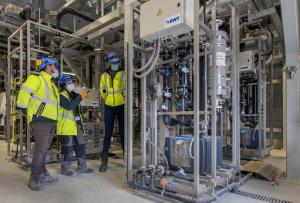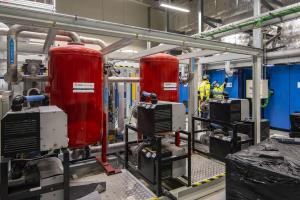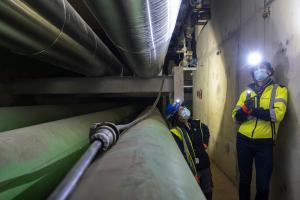Directly from producer to consumer
When fully operational, ITER will be like a large living being with fluids rushing through kilometres of veins and arteries to organs located throughout the installation. By way of pumps, valves and compressors, powerful flows of air, water, helium and nitrogen will be pushed through a ramified network of underground pipes and delivered to a large variety of "clients." In early February, the first connection between producer and consumer was successfully established, delivering compressed air to the cryoplant's hundreds of pneumatic activators.
The facility hosts systems that produce, chemically treat and send compressed air and gases flowing to clients through the piping network. Hot water is produced in another unit hosting the largest electrical boiler in Europe. Gaseous helium for small consumers such as valves and local testing and inspection systems comes from bottle racks. Gaseous nitrogen extracted from the atmosphere by systems located in the cryoplant will be dedicated to the inerting of glove-boxes and other enclosures, valve actuation, ventilation for tritiated water holding tanks, and ventilation for cooling water system users like drying systems and nitrogen-based pressurizers and valves.




